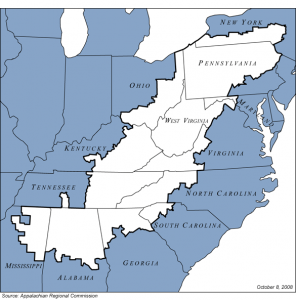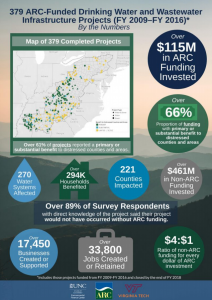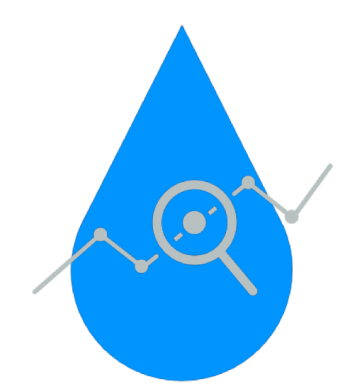Funding programs that support drinking water and wastewater infrastructure projects generate benefits that exceed simply providing cost savings to the communities receiving subsidized loans and grants. Water and wastewater infrastructure is critical for economic development, environmental protection, public health, and various aspects of improving communities’ quality of life. When investing in water and wastewater systems, attention is often given to the funding amounts, cost savings, and improvements to the physical infrastructure, such as how many miles of distribution lines were replaced. Quantifying the broader outcomes, such as improvements to local economic and quality of life conditions, is more challenging. Yet, the Appalachian Regional Commission (ARC) sought to evaluate the impact of its water and wastewater investments in those terms. To accomplish this program evaluation, the EFC at UNC and researchers at Virginia Tech recently assessed 379 projects that were at least partly funded by ARC between Fiscal Years 2009 – 2016. The results show that ARC’s water and wastewater investments contributed to significant positive economic growth and development across the Appalachian Region.
The Appalachian Regional Commission (ARC) is a regional economic development agency, representing a partnership of federal, state, and local governments. Its mission is “to innovate, partner, and invest to build community capacity and strengthen economic growth in Appalachia” – a region that spans 420 counties in 13 states, from Mississippi to New York.
As part of its 2016-2020 Strategic Plan, ARC outlined five strategic investment goals. Goal 3: Critical Infrastructure, addresses ARC’s motivation to fund, by way of grants, infrastructure projects throughout the region, including water and wastewater infrastructure projects. These grants are then matched by local funding from the utilities as well as often leveraged by other public (such as USDA, SRFs, EDA, CDBG, etc.) and private sources of funding.

The Appalachian Region
Between Fiscal Years 2009 – 2016, ARC invested $115 million in 379 completed drinking water and wastewater projects in nearly half of the Region’s counties and in all 13 states within the Region. ARC’s investments leveraged approximately four times that level of funding from local and other public sources, plus an additional $3.8 billion in private sector investments in the Region.
Our evaluation revealed that communities value the investments provided by ARC as evidenced by high demand and their key role in project completion. The projects benefited a large number of households across the region. Moreover, ARC’s investments targeted distressed areas and counties, led to significant improvements in local economic conditions, and met or surpassed locally determined goals. Some takeaways from the evaluation:
- The funded projects benefited more than 17,400 businesses, created more than 11,600 jobs, and retained at least 22,100 jobs. Counties in which ARC invested in water and wastewater projects experienced greater reductions in unemployment rates and greater improvements to median household incomes than in other counties.
- Although benefits to households were reported in only half of the evaluated projects after completion, more than 294,100 households directly benefited from these projects. Nearly 30 percent of the projects that benefited households provided those benefits mostly to households that were not already connected to the water or wastewater system: in other words, by expanding or extending service to additional households.
- Two-thirds of ARC’s water and wastewater investments were awarded to communities in areas and counties labeled as “distressed”. Communities that received investments had higher unemployment rates, lower overall employment, lower median household income, and higher poverty rates than the other communities in Appalachia. Those communities also received higher levels of ARC project funding than others.
- Most projects met or exceeded set goals and expectations, and addressed the intended main challenge or opportunity. Additionally, the majority of projects were completed on time and on budget. A key factor to the success of projects is a strong partnership between the community and the agency that administers the project funds.
To help communicate the impact of this portfolio of projects within the Region, the key takeaways were also visualized with an infographic, shown below.

The program evaluation findings, while specific to ARC’s funding program, provide a general indication to the broader benefits of investing in water and wastewater projects. These investments not only improve the condition of the physical assets – which improves the level of service that residents and businesses receive – but help improve the quality of life and economic conditions of communities. Utilities should continuously invest in their infrastructure, which ultimately pays dividends in the form of improving the lives and economic development in their communities. Funding programs that provide subsidized loans and grants to water and wastewater utilities play a critical role in enabling these projects, particularly in communities where some of the projects might not be otherwise financially feasible.
Read the full report (or the Executive Summary) and watch five video case studies on ARC’s website or on EFC’s website.
To apply for ARC water and wastewater funding (for communities located within one of the 420 counties), contact your ARC state program manager.
Shadi Eskaf joined the Environmental Finance Center in 2004 and is the EFC’s Research Director. Shadi works on environmental finance projects in local, statewide and regional settings, conducting research on water and wastewater utility finance and rates, water use, infrastructure capital needs and funding, and water systems collaboration and regionalization.





Leave a Reply